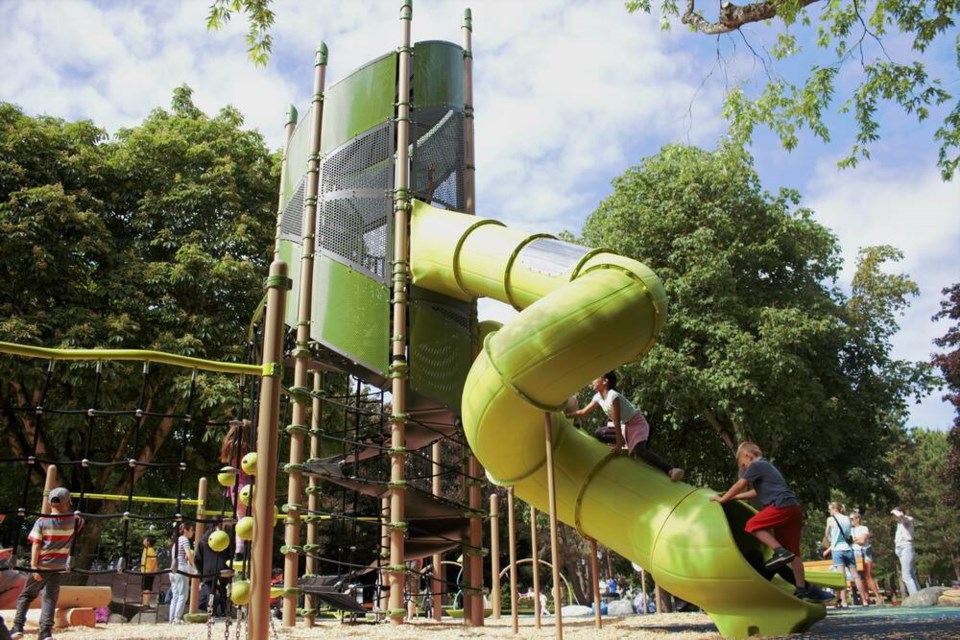Risky play is often misunderstood as “supervisory neglect or recklessness” on an adult’s part.
But allowing kids to take risks is different from exposing them to hazards, explained a Richmond educator who’s been researching outdoor play.
“Risky play … is defined as thrilling or exciting forms of play that may have potential for physical injury, whereas hazards are more likely to result in injury,” said Megan Zeni, a doctoral candidate at UBC’s Faculty of Education.
However, risky play is not something that can be taught, she added.
Zeni told the Richmond News the role of teachers is to help children understand the difference between risks and hazards and what are considered safe and reasonable decisions.
“From that, children learn how to assess risks and you only learn how to do that by learning to make good decisions and practice making decisions,” said Zeni.
“It’s really important that children have opportunities to bump up against those limits when they’re young and there’s still lots of adults around to help them navigate those decisions.
“It’s better to do this before sending them off to university where they will have to make decisions and deal with the consequences on their own.”
Zeni has created an online tool to help Canadian teachers looking to incorporate more outdoor learning in their curriculum.
She created the digital learning hub called the Outdoor Play and Learning tool alongside outdoor risky-play researcher Dr. Mariana Brussoni and with the help of the BC Children’s Hospital Foundation.
The online tool explains the importance of risky outdoor play and has modules on how teachers can take learning beyond the classroom.
“Teachers often like the idea of outdoor learning but may not know where to start,” said Zeni.
It offers practical videos, advice for all-weather learning and ways to teach different subjects outdoors.
Most importantly, it explains why risky outdoor play is important for children to learn the differences between taking risks and knowing what hazards are.
The online tool includes 16 modules that were determined by teachers who have experience in outdoor play to be what teachers were most looking for support with, according to Zeni.
During her research and development of the tool, Zeni learned the wellness of not only children but also teachers improved with more time spent outdoors.
Teachers appeared to be happier and healthier and reported an increase in job satisfaction, she explained.
“That translates to improved learning conditions for children and more teachers staying in the profession,” said Zeni.
While Zeni said teaching outdoors may not be something that works for everybody, being outdoors generally greatly improves all measures of wellness for everyone.
She added it’s essential for teachers that there’s “equitable access” to outdoor learning as it’s increasingly difficult for children and for families to find space and time for that in their busy lives.”
“The most important part of this work was being able to give a voice to the teachers that do this work across Canada.”
Got an opinion on this story or any others in Richmond? Email your thoughts or story tips to [email protected].



